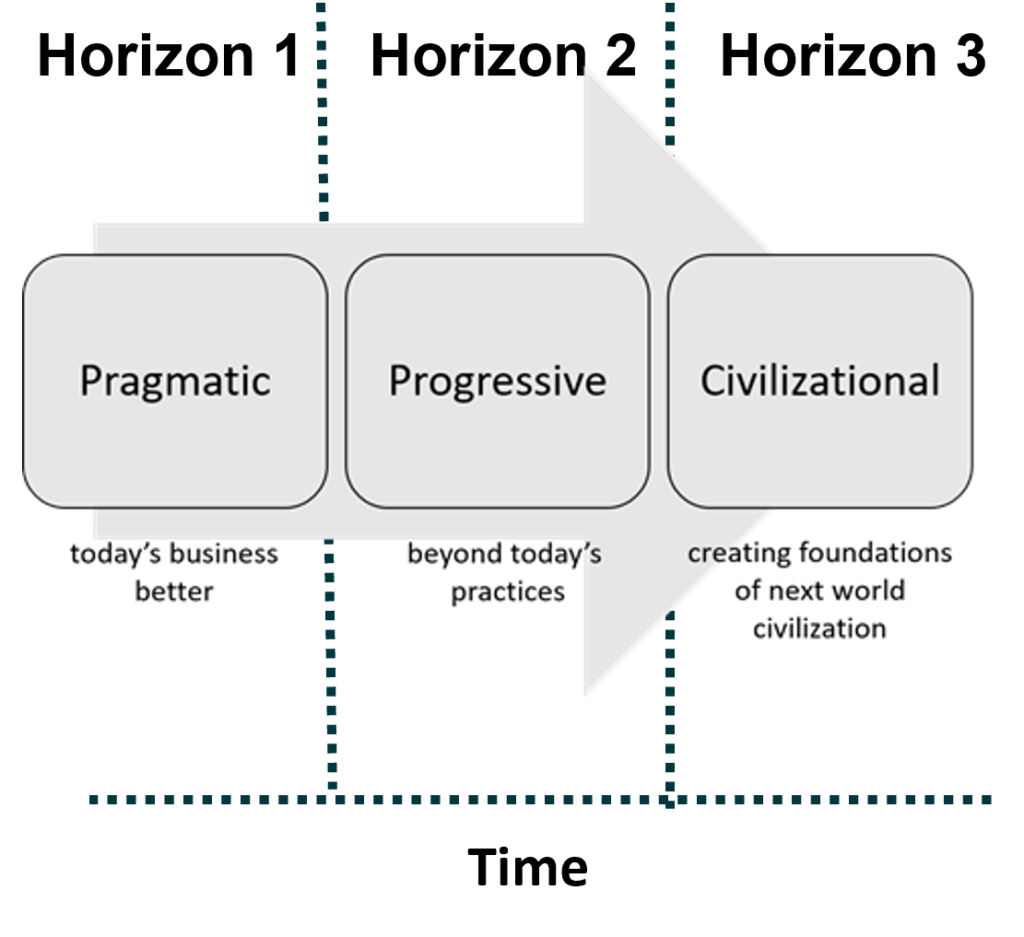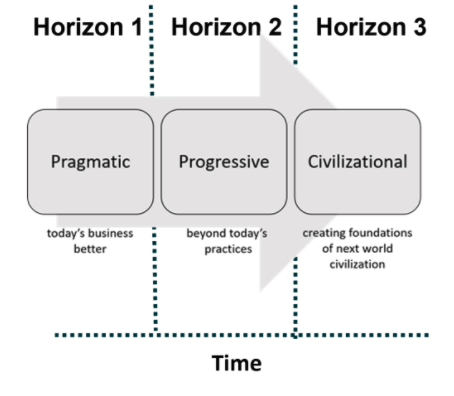 What are the purposes of foresight work? Back in 2009 futurist Richard Slaughter attempted to answer that question by classifying several hundred foresight works globally by the three interests or purposes.
What are the purposes of foresight work? Back in 2009 futurist Richard Slaughter attempted to answer that question by classifying several hundred foresight works globally by the three interests or purposes.
- Pragmatic: doing today’s work better
- Progressive: moving beyond today’s practices
- Civilizational: creating the foundations of the next world civilization
Perhaps it was no surprise that most work was in the pragmatic category, followed by progressive, and the least amount of work being civilizational. A key objective of his futures work has been to encourage more progressive and ideally more civilizational foresight work. When a member of the original research team, Chris Riedy revisited the work (as part of Knowledge Base of Futures Studies 2020), he did not see a significant shift in the purposes of foresight work, although he did cite several positive developments in the field.
It occurred to me that these purposes align with the popular Three Horizons framework. The figure suggests the alignment as follows:
- Pragmatic work will most typically be in Horizon 1, the current system.
- Progressive work will most often be aimed at Horizon 2, the zone of transition.
- Civilization work seeking to create a new system will most commonly be aimed at Horizon 3.
Rather than an exclusive focus on one purpose or another, perhaps our project work engages all three? Futurists mostly focus on exploring horizons 2 and 3, but our recommendations will engage horizon 1 as we tie the future to the present. And we will also engage multiple horizons within a project, touching on all three purposes. We may encourage clients to stretch their thinking by engaging H3, extend their thinking in H2, as well as pragmatically consider what needs to be done in H1. — Andy Hines

Leave a Reply